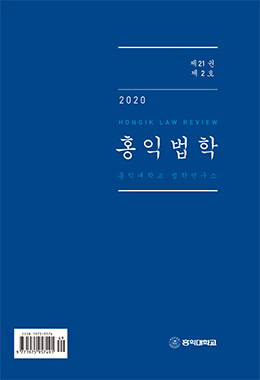혈액제제 제조물책임에 관한 대법원 2017. 11. 9. 선고 2013다26708, 26715, 26722, 26739 판결에 대하여 살펴보았다.
설계상 결함의 판단기준은 매우 다양하며 그 유무 판단은 여러 사항을 종합적으로 고려하여 사회통념에 따라 이루어져야 하는데, 대상판결의 사안에서는 감염위험제거의 주의의무 이행 여부가 위험과 효용을 비교형량 한다는 의미를 내포하고 있는 합리적 대체설계의 주요 구성 요소로서 설계상 결함판단의 기준으로 기능한다.
혈액제제 제조업체가 문진 등을 통하여 C형 간염 바이러스 등의 감염 위험이 높은 자로부터 혈액이 제공되지 않도록 하는 주의의무 이행 여부에 관한 증명책임 부분에서, 대상판결이 제조물책임 소송 분야에서는 최초로 ‘위험영역설’을 받아들인 것으로 보인다.
대상판결은 혈액제제의 결함 또는 제약회사의 과실과 피해자의 감염 사이의 인과관계의 추정 부분에서 기존 대법원 판례의 경향에 따라 ‘일응의 추정’의 법리를 채용하여 피해자의 증명책임을 완화하고 있다. 그런데 감염추정기간 동안 투여 받은 다른 혈액제제가 바이러스에 오염되었을 가능성이 더 높거나 투여 받은 기간이 더 긴 경우에 관하여, 원심은 인과관계 추정이 번복되었다고 판단하였으나 대상판결은 그 추정의 번복을 인정하지 않았다. 대상판결은 그 부분에 관해서는 간접반증을 인정하지 않은 것이다. 그러한 대상판결의 판단은 최초의 판단으로서 선례적 가치가 있다고 본다.
I studied on whether the Supreme Court Judgment(2013Da26708, 26715, 26722, 26739, sentenced on November 9, 2017; hereinafter referred as ‘the subject judgment’) is correct or not.
The subject judgment seems to have imposed a high level of caution on the removal of infection risk on the blood product manufacturer as the main criterion for determining defects in design. In the case of the subject judgment, the implementation of the attention obligation to eliminate infection risk is a major component of the rational alternative design, which implies that risk and utility are compared, and functions as the basis for the determination of defects in design. A defect in design may be recognized if the manufacturer of the blood product fails to fulfill its duty of care to eliminate the risk of infection in the patient.
The subject judgment seems to have adopted the "risk domain theory" in the area of proof of the fulfillment of the duty of care, which prevents blood products manufacturers from providing blood from people with a high risk of infection such as hepatitis C virus through screening. The subject judgment stated that the manufacturer was responsible for proof of the fulfillment of such a duty of care. Infected dangerous substances, such as hepatitis C virus, are located in the controlling or dangerous area of the blood product manufacturer. In the field of manufacturing liability lawsuits, the subject judgment seems to have accepted the "risk domain theory" for the first time.
The subject judgment follows the trend of existing Supreme Court precedents in the estimation of the causal relationship between defects in blood products or the malpractice of pharmaceutical companies and the infection of victims. The victim's burden of proof is assessed to be mitigated according to the law of 'prima facie-Beweis', The Supreme Court(2008Da16776) said that “The presumption of causal relationship will not be reversed if the victim receives blood products or blood transfusions manufactured by another company.” The above estimates cannot be reversed by the administration of other blood products or blood transfusions, even if they are significantly more likely to be infected by other blood products or blood transfusions and have been exposed to such high-risk sources for a long time. The subject judgment is considered to be of precedent value as the first judgment.


